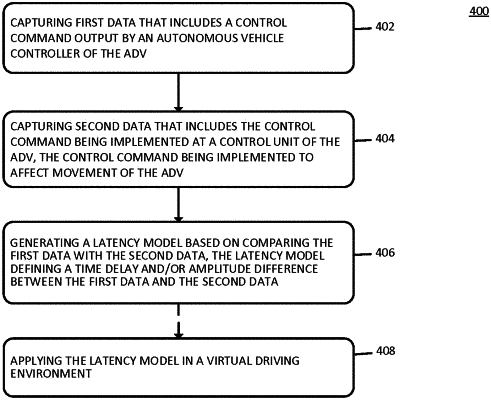| CPC B60W 60/0011 (2020.02) [B60W 10/06 (2013.01); B60W 10/18 (2013.01); B60W 10/20 (2013.01)] | 20 Claims |

|
1. A method for simulating driving of an autonomous driving vehicle (ADV), comprising:
capturing first data that includes a control command output by an autonomous vehicle controller of the ADV and timing of outputting the control command, wherein the control command was generated using an autonomous driving algorithm;
capturing second data that includes the control command being implemented at a control unit of the ADV and timing of the implementation, the control command being implemented to affect movement of the ADV; and
determining a latency model based on comparing at least timing of the first data with the second data, the latency model defining time delay between the first data and the second data and the latency model defining an amplitude difference between the first data and the second data, wherein the latency model is utilized to simulate the autonomous driving algorithm in a virtual driving environment.
|